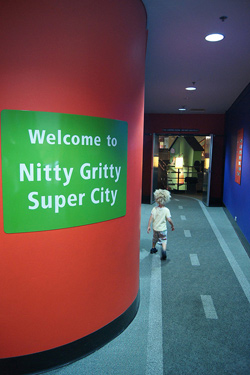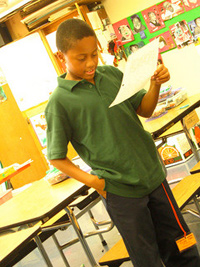
Source: Scienceworks Melbourne - Nitty Gritty Super City, PlanningGreen, Flickr
To further develop the central idea of your narrative, try to put yourself back into the event or experience you chose in the last section. Visualize the circumstances surrounding the event or people involved. Are there strong emotions connected to your memory of the situation? Consider the decisions that were made, the actions taken, and the consequences that resulted. Think about the situation or the people that triggered your memory. Reflect on why your memory is important to you and how it changed you. You can use the same questions from the previous section to help you come up with more details:
- What makes this subject important to you?
- Who are the people involved?
- How important are they to the event or experience?
- Were there decisions made or actions taken, and if so, what consequences resulted?
- What specific memories are associated with the event or experience?
- Were there multiple events?
- Were there strong emotions involved, and if so, to what or whom were they connected?
In addition to these questions, consider one more important element. A good personal narrative includes the answer to the following question:
- What does this experience mean to me?

Source: Source: Elijah, one of my students, sharing his story, Brande Jackson, Flickr
Maybe the situation or event you are writing about changed the way you think or feel about life, or a part of life. Consider this question carefully because it will play a major role in fleshing out the central idea of your narrative. Remember, the central idea is the main idea of your story.
 Using your notes, respond to the questions above. They are designed to help you further develop the central idea of your personal narrative. Remember to include any information that expresses what the event or experience meant to you then as well as now. When you are finished, check your understanding to see possible responses. Our answers will be specific to the example we are using in this lesson “My best friend Danny,” but you should continue writing about the central idea you checked off in the chart in the previous section.
Using your notes, respond to the questions above. They are designed to help you further develop the central idea of your personal narrative. Remember to include any information that expresses what the event or experience meant to you then as well as now. When you are finished, check your understanding to see possible responses. Our answers will be specific to the example we are using in this lesson “My best friend Danny,” but you should continue writing about the central idea you checked off in the chart in the previous section. Sample Responses:
- We decided to go on an adventure in the dead of winter. It was cold and snowy.
- Danny and I decided to go alone; we didn’t invite anyone else to go with us.
- Danny became my best friend because of what happened during that trip.
- We trekked miles into the forest. We got lost. Dogs and cows chased us.
- I ended up saving Danny from drowning in a swollen stream.
- Looking back, maybe we shouldn’t have gone so far.
- Multiple events that happened were being lost, being cold, being chased, almost downing, walking home soaking wet and freezing.
- When we realized we were lost, I remember feeling pretty scared and lonely.
- This adventure I took with my best friend, Danny, provided me with an example of what real friendship feels like.
Now you should be ready to write your personal narrative. You brainstormed and chose one item or topic to focus on for your story. Next, you made a list of details, events, or situations related to your topic. Then, you checked off one specific detail to narrow the focus of your topic. Finally, you responded to questions about the event or detail you chose in order to connect to your main idea such of “friendship,” “personal challenges,” etc.
For our topic “My best friend Danny,” our narrowly focused central idea became this: The adventure Danny and I had in the dead of winter means a lot to me now because it showed me what it means to have a best friend.

Using your notes, write the narrowly focused central idea of your personal narrative.